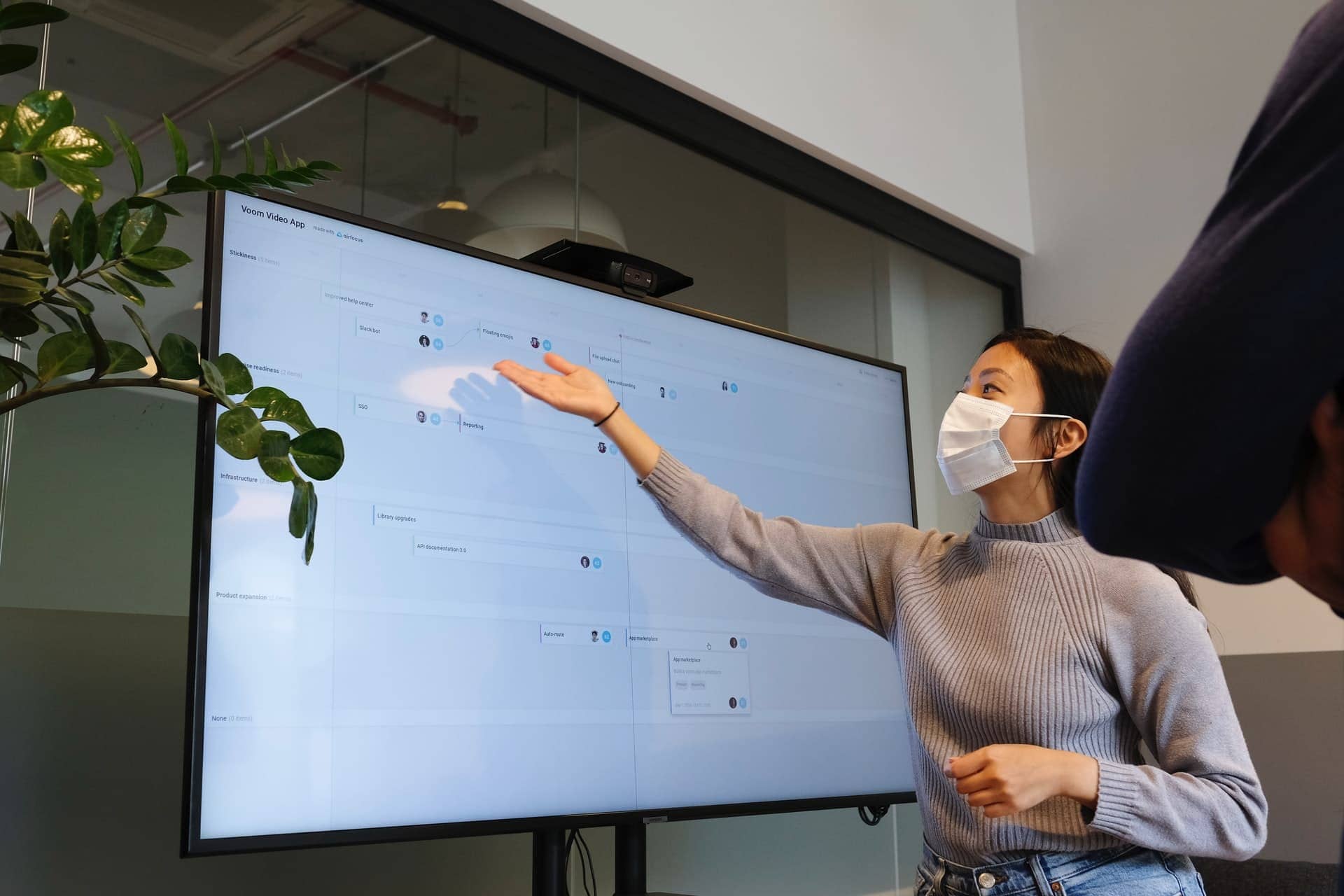Companies Want to Return to Work
There’s growing eagerness for office re-entry according to a recent study that showed 84% of companies are likely to return to the office in the near-term. A 100% return is not probable, however, and many future operating strategies will encompass some type of hybrid in-office and remote policy. Notably, giants like Google, Amazon and Microsoft have already publicized their hybrid approaches. Will this flex-work trend stick? That’s a loaded question because there are just too many unknowns: future health and safety implications, recruitment and retention trends, changing demographics, transportation logistics and fluctuating market fundamentals. Regardless of these uncertainties, demand for office is continuing upward.
Remote work proved to be a lot more effective than originally predicted, but employers still value the physical office environment for business, collaboration and inclusion, training and corporate culture. Tenants that moved out or downsized during the crisis are now plotting their next move and should start to shop around for new office space. Office tour activity is already on the rise, reaching near-pre-pandemic levels in select markets. Some CRE brokerage firms reported office leasing tours increasing 161% nationally between December 2020 and March 2021, which should translate into significant deal flow in coming months.
The New Office
Prior to COVID-19, there was already a gradual shift toward smaller office footprints favoring collaborative designs with fewer individual offices that tended to create a lot of dead space. Post-pandemic, experts expect this trend to reverse as 63.1% of companies agreed offices will require more square-feet per worker than pre-COVID 19 levels to maintain proper health guidelines. This means that fewer employees will be concentrated in open areas and more private offices will take shape. This doesn’t necessarily equate to bigger leases and higher absorption. Instead, existing agreements may actually remain relatively unchanged because WFH will offset the need for more square footage and space requirements for on-site staff—keeping building leasing activity flat and vacancies from rising. It’s also worth pointing out that the total amount of occupied stock in the U.S. declined by less than 3%, suggesting that many tenants are still taking a “wait-and-see” approach before making any changes to their footprints.
It should be noted, however, that KBS has found many forward-thinking tenants hesitant about reducing their footprint or signing short-term leases as it could hamper their ability to retain premium space or expand if needed. The office construction business is also taking a hit right now for many reasons, not the least of which is a scarcity of construction materials.
Staying Relevant
Health and wellness is the new amenity. A recent study that showed 53.9% of companies felt health and wellbeing will become more important across all real estate sectors. To remain competitive and relevant in a post-pandemic world, office owners/operators are increasing their efforts toward achieving “healthy building” status. That is, better cleaning regimens and well-defined usage guidelines of common areas and shared amenities such as gyms, food and beverage areas, elevators, etc. Moreover, enhanced air ventilation has become more than a desired amenity; it’s now viewed as practically essential for a “healthy building.”
At 201 Spear Street in San Francisco, for instance, KBS recently installed a bipolar ionization system. Integrated into a building’s HVAC system, this technology “scrubs” the air by converting oxygen molecules into charged atoms that then deactivate airborne pathogens. Bipolar ionization also attaches to small particles caught in air filter systems more effectively.
New technologies will also play a critical role in a building’s safety and wellness rating (think touchless technologies such as keyless entry, occupancy management and increased connectivity to help tenants maintain inter-office safety guidelines). For instance, at Union Bank Plaza in downtown Los Angeles, KBS instituted a contactless visitor entry system with a touchless tablet at the security desk. The tenant enters their visitor’s information into the Angus work-order system as usual; the difference now, however, is that each visitor is emailed a QR code to scan when they get to the building using their mobile phone at the touchless tablet. The QR code is accompanied by a COVID-19 self-assessment questionnaire, which a visitor must complete in order to enter the building prior to scanning their code.
It’s widely believed that buildings such as this could be in greater-demand going forward, potentially commanding higher rents compared to their less health-adapted counterparts. An uptick in future building health and wellness certifications is also expected. In fact, KBS recently committed to the verification of 16,011,533 square feet of Class A office space in its client portfolio to achieve UL Verified Healthy Building for Indoor Air status.
Location. Location. Location.
2020 accelerated the demographical shift toward more affordable secondary markets over downtown cores. This trend isn’t new and has been underway prior to COVID-19, but it gained significant traction amid flexible work schedules, low mortgage rates, and increased emphasis on space. Mimicking changing demographic behavior and going where the talent goes, more employers are likely to consider relocating or expanding to the ‘burbs, tapping into well-connected office assets — especially those within or proximate to mixed-use environments. For example, Lion Real Estate Group, (LREG), a real estate investment and asset management firm, recently relocated their headquarters from Los Angeles to KBS’ 3811 Turtle Creek in Dallas, Texas. Some industry execs predict the “hub-and-spoke” model with a core urban headquarters and several regional offices to gain prominence.
Investor Interest
CRE investors spent a lot of time on the sidelines in 2020, and overall investment activity should continue to remain below pre-COVID-19 levels. Although office real estate was one of the hardest-hit CRE property types, there seems to be some interesting investment opportunities ripe for the picking. Don’t be surprised to see increased investor interest for flex space to diversify portfolios, as well as “healthy buildings” that could fetch as much as 7% more per square foot compared other assets. Properties in expanding secondary markets could also see some significant activity due to strong local demographics and fundamentals. Last year, office sales in CBDs dropped 72% year-over-year, while suburban office sales fell only 54%. Valuations are predicted to remain steady for quality suburban assets, while CBD properties may face continued pressure and could give opportunistic investors some bargaining power.
The U.S. economy is on the up-and-up and is projected to expand by more than 6% this year. The office market will be slow to follow and may not start to achieve stability until 2022. There is no crystal ball, and it will be years before we truly realize how the pandemic and its aftermath has impacted office real estate. But for now, we are moving in an upward trajectory.
Stay up to date on industry trends, news and conversations at kbs.com/insights, or click here.




